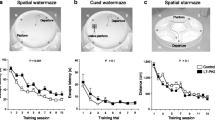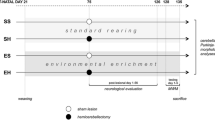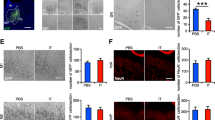Abstract
Recently, we demonstrated the prevalent role of cerebellar networks in the acquisition of the procedural components of spatial information by testing hemicerebellectomized (HCbed) rats in a classical spatial task, the Morris water maze (MWM). As procedures used in the water maze are a mixture of different components (that is, general procedures, exploration procedures, direct reaching procedures), for optimally solving a spatial task all procedural components must be opportunely managed. Thus, severely impaired procedural learning of cerebellar origin can be better comprehended by fractionating the procedural facets. To this aim, a two-step water-maze paradigm was employed. Normal rats were first trained to search for a hidden platform moved to a different position in each trial, utilizing a water maze setting in which visual cues were abolished by heavy black curtains surrounding the tank. In this paradigm, normal animals solved the task by using general and exploration procedures, but they could not use direct reaching skills. A subgroup of these pretrained animals was then HCbed and, after recovery from cerebellar lesion, was tested in a water maze with normal environmental cues available, a paradigm in which normal animals develop abilities for reaching the target with very direct trajectories. Pretrained HCbed animals, however, did not display the typical spatial deficits of naive HCbed rats, persisted in exhibiting the scanning strategy learned during pretraining, and never displayed direct reaching skills. In conclusion, cerebellar networks appear to be involved in the acquisition of all procedural facets necessary for shifting behavior within the maze until direct reaching of the platform. The lack of flexibility in changing exploration strategies displayed by pretrained HCbed rats is interpreted by taking into account the well-known cerebellar frontal interplay sculpting a specific cerebellar role in the acquisition of spatial procedural steps.
Similar content being viewed by others
Author information
Authors and Affiliations
Additional information
Received: 20 June 1998 / Accepted: 19 February 1999
Rights and permissions
About this article
Cite this article
Leggio, M., Neri, P., Graziano, A. et al. Cerebellar contribution to spatial event processing: characterization of procedural learning. Exp Brain Res 127, 1–11 (1999). https://doi.org/10.1007/s002210050768
Issue Date:
DOI: https://doi.org/10.1007/s002210050768




